Rosemary is a perennial herb that is native to the Mediterranean. Rosemary can be grown in USDA hardiness zones 6-10. It prefers full sun and well-drained soil. Rosemary can be generally propagated from seed, cuttings, or division.
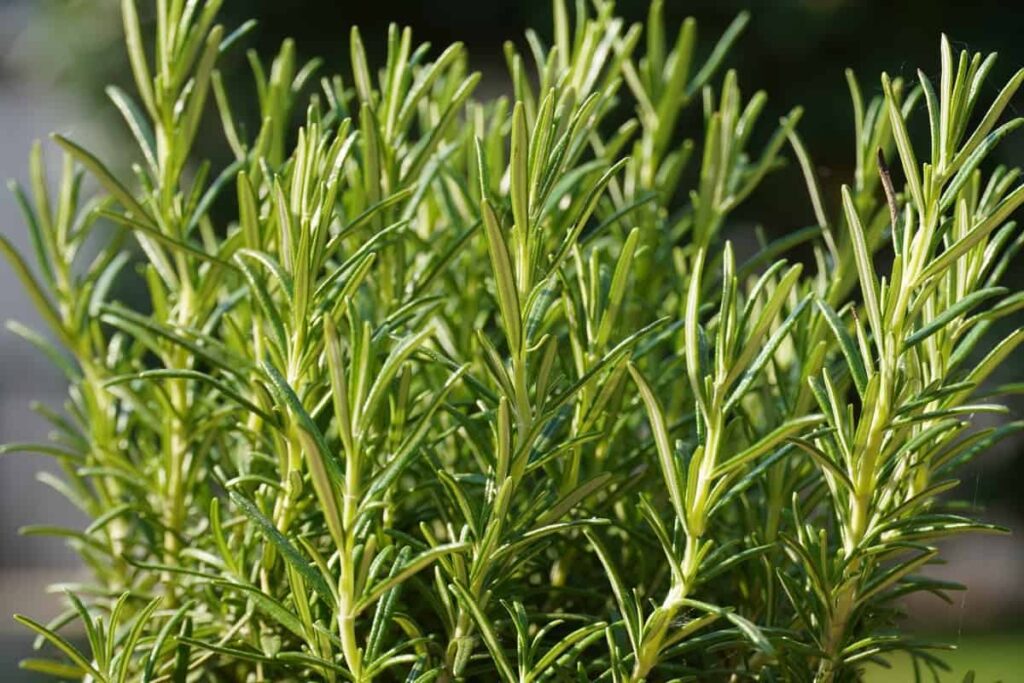
How to grow Rosemary in USA
Soil requirement for growing Rosemary in the USA
- Rosemary is a hardy, perennial herb native to the Mediterranean region. It has a wide range of culinary and medicinal uses. Rosemary can be grown in most parts of the United States, although it may not survive the winter in very cold climates.
- The soil requirement for growing Rosemary in the USA is relatively simple. Rosemary prefers well-drained, sandy soil pH levels between 6.0 and 7.0. It tolerates drought and salt spray, making it a good choice for coastal gardens. Add organic matter to improve drainage if necessary.
- Amend heavy clay soils with organic matter before planting to improve drainage. Rosemary tolerates drought once established, so choose a location that does not stay too wet during winter.
- Rosemary does not like wet feet, so ensure the soil drains well and does not stay soggy for long periods. If your growing soil is heavy or clay-like, you can improve drainage by mixing some organic material such as compost or peat moss.
Growing Rosemary in pots
- It is a perennial herb with fragrant, evergreen leaves. Rosemary can be grown in pots or on the ground.
- When growing Rosemary in pots, it is essential to use a well-draining potting mix. Rosemary does not like to sit in wet soil. Be sure to water your Rosemary plant when the soil is dry. Overwatering can lead to root rot.
- To propagate Rosemary in pots, you can take stem cuttings from an existing plant. Cut 4-6 inches of stem from the tips of new growth using sharp pruning shears. Stick the Rosemary cutting into a pot filled with moistened perlite or sand. Cover the pot or container with a plastic bag or propagating dome to create humid conditions ideal for germination. Place the pot in bright indirect light and wait for new growth to appear in 4-8 weeks.
- When planting Rosemary, choose a spot in your garden that receives full sun to partial shade. Amend your soil with compost before planting. Water regularly during dry spells but do not overwater the plant, as this can lead to root rot. Fertilize every few months with an all-purpose fertilizer or compost tea during the growing season.
In case you missed it: Rosemary Oil Extraction Methods, Process, Techniques
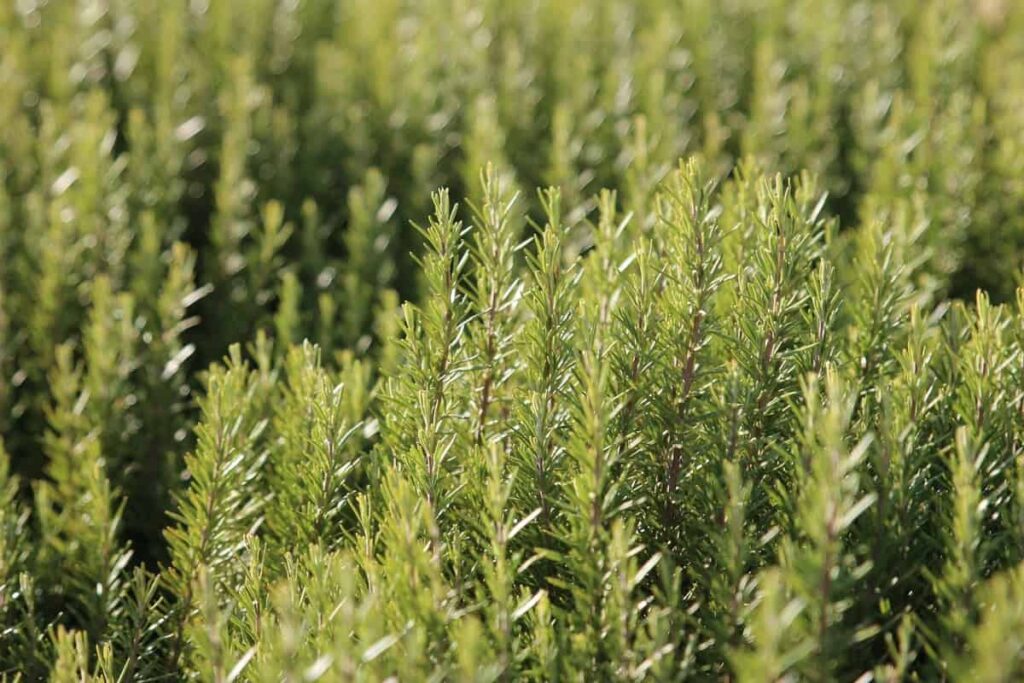
Rosemary growing season in the USA
Rosemary is a fragrant, evergreen herb that is popular in cooking. Rosemary grows best in full sun and well-drained soil. It is relatively drought-tolerant and can be grown in most regions of the United States. The Rosemary growing season begins in early spring and extends through late fall.
How to grow Rosemary outside?
- Rosemary is a fragrant, evergreen herb that is popular in Mediterranean cuisine. Rosemary can be grown as a culinary or ornamental herb in many parts of the world.
- In the United States, Rosemary is best suited for growing in USDA hardiness zones 6 through 10. In cooler climates, Rosemary can be grown as an annual herb or in pots that can be brought indoors during winter.
- When selecting a site to grow Rosemary, choose a place with full sun and well-drained soil. Rosemary plants can be started from seed, cuttings, or transplants.
- For best results, start Rosemary seeds indoors 6-8 weeks before the last frost date. Sow seeds on the surface of moistened potting mix and then cover with a thin layer of sand. Keep the seedlings moist but not wet, and provide plenty of ventilation to prevent damping off.
- Transplants can be purchased from a garden center or nursery and planted outdoors. Container-grown plants can be moved outdoors once temperatures are consistently above 10°C.
- When planting Rosemary, space plants 18-24 inches apart to allow for adequate air circulation. Amend heavy clay soils with organic matter to improve drainage.
Care for Rosemary plants indoors
Keep the soil moist but not waterlogged to care for your Rosemary plant indoors. You can water it deeply if the top few inches of soil are dry. Be sure to provide good plant drainage by using a well-drained potting mix. Additionally, fertilize your Rosemary plant every 2 weeks with a balanced fertilizer to promote healthy growth. Lastly, give your plant plenty of bright light, as it needs at least 6 hours of sunlight per day to thrive.
Tips for planting Rosemary in the USA
- Rosemary is a fragrant, evergreen herb that is native to the Mediterranean. It is a mint family member with small, needle-like leaves. Rosemary is used as a culinary herb, in cosmetics, and for its medicinal properties.
- Choose a location for growing Rosemary with full sun and well-draining soil. Amend the soil with compost before planting. Water regularly during the growing season. Once established, Rosemary is drought tolerant. Water the plant regularly, but do not make the soil soggy. Fertilize the plant every month during the growing season with a balanced fertilizer.
- To harvest Rosemary, cut stems back by one-third after flowering has finished. You can also harvest individual leaves as needed throughout the growing season.
- The yield of Rosemary varies depending on the growing conditions and cultivar. Plants grown in full sun with good drainage produce the most leaves. Plants grown in shady areas or with poor drainage produce fewer leaves. Harvesting begins when the plants are 6-8 weeks old. Leaves can be harvested from mature plants at any time of year.
In case you missed it: Rosemary Cultivation Information Guide
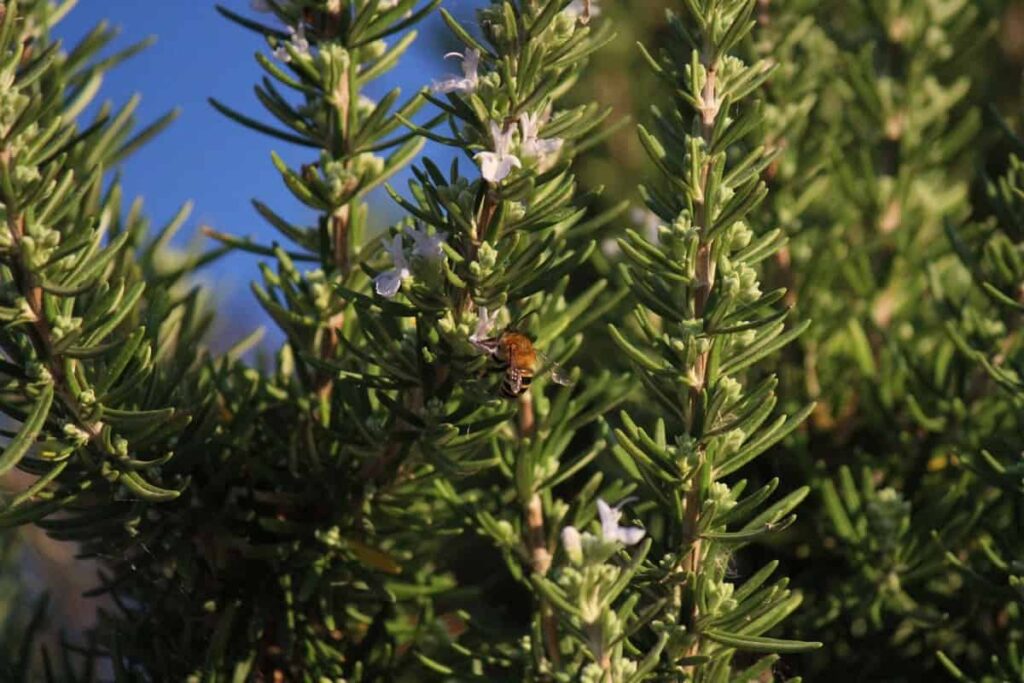
How to propagate Rosemary in the USA?
If you live in an area with very cold winters, you may need to grow Rosemary indoors or protect it with a cold frame or another type of winter protection. It can be propagated by seed, cuttings, or division; most nurseries and garden centers sell plants already started from cuttings or divisions. A few essential things to remember when growing Rosemary in the United States.
Firstly, Rosemary needs full sun to thrive and will not do well in shady areas. It is also essential to plant Rosemary in well-drained soil; Rosemary does not like wet and will quickly succumb to root rot if it is too moist. Finally, Rosemary is a relatively drought-tolerant plant, so it is important not to overwater it. Always check the soil before watering to ensure it is dry; if it is still moist, wait until the growing soil has dried.
Rosemary growing areas in the USA
Rosemary is commonly grown in California, Texas, Florida, and Oregon in the United States. California produces the most Rosemary of any state in the country. The climate in California is ideal for growing Rosemary, with warm days and cool nights. The state also has a long growing season, which allows farmers to produce a large quantity of Rosemary. Texas also has a warm climate that is perfect for growing Rosemary.
The state has a shorter growing season than California, but it still produces a significant amount of Rosemary. Florida’s climate is similar to Texas’s, but the state has a longer growing season. This allows farmers to grow Rosemary year-round. Oregon has a cooler climate than the other states on this list, but its long days and cool nights are still conducive to growing Rosemary.
Rosemary production in the USA occurs predominantly in California, with some production in Florida and Texas. The ideal climate for Rosemary production is warm and dry, with little humidity. Rosemary plants are drought-tolerant and can be grown in many soil types, although they prefer well-drained sandy soil.
Tips for growing Rosemary from seed
Rosemary can be propagated from seed, but getting the seeds to germinate cannot be easy. The best time to sow Rosemary seeds is in late winter or early spring. Sow the seeds on the surface of a well-drained seed-starting mix and press them gently into the mix. Keep the mix moist but not wet, and place it in a warm location. The seeds will usually germinate in 21-30 days.
Once the seedlings emerge, transplant them into 4-inch pots filled with a well-drained potting soil mix. Grow the seedlings under bright light for several weeks before planting them outdoors. When transplanting Rosemary into the garden, choose a sunny location with well-drained soil. Amend the soil with compost or other organic matter before planting, and space plants 18-24 inches apart. Water the plant regularly during the first growing season to help establish a deep root system.
In case you missed it: How to Grow Okra in USA: Soil, Propagation, Planting, Care, and Farming Tips
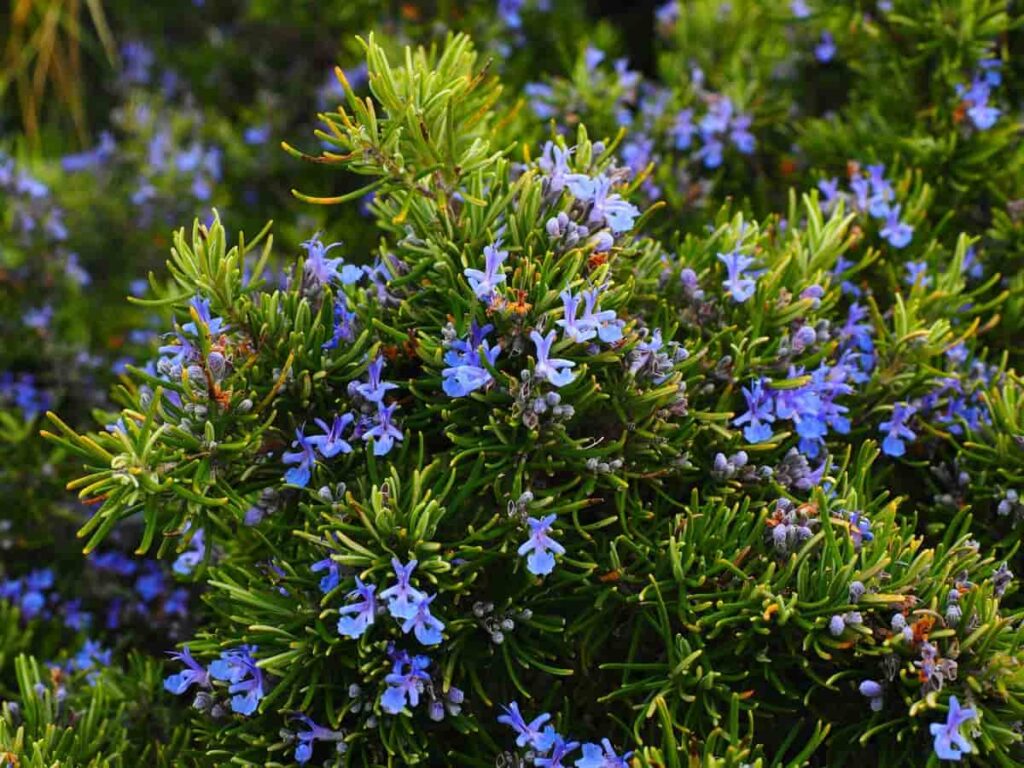
Growing Rosemary from cuttings in the USA
- If you’re looking to grow Rosemary in the USA, there are a few things you need to know. Rosemary is a Mediterranean herb that does best in full sun and well-drained soil. When propagating from cuttings, take 4–6-inch cuttings from new plant growth in late spring or early summer. Dip the Rosemary cuttings in rooting hormone and plant them in a pot filled with perlite or sand.
- Keep the pot moist and in a bright spot out of direct sunlight. Once the roots have developed, and the plant is growing actively, transplant it into your garden.
- Water regularly during dry spells, especially during the first year after planting. Fertilize annually with compost or manure. To harvest, snip off sprigs as needed, not damaging the plant. Rosemary can also be dried for later use.
Growing Rosemary from division
When you divide Rosemary, do it in early spring when the plant is still dormant. Use a sharp knife to cut the roots, careful not to damage them. Each division should have several stems with leaves attached. Plant the divisions in well-drained soil and water them regularly until they are established.
When growing Rosemary from division, it’s essential to give the plants plenty of sun and room to grow. Fertilize them monthly with an all-purpose fertilizer and prune them regularly to keep them looking their best. With a little care, your divided Rosemary plants will thrive and provide fresh herbs for years.
Tips for fertilizing Rosemary plant
Rosemary grows best in full sun and well-drained soil. It is fairly drought-tolerant once established. Rosemary should be fertilized every two weeks with a balanced liquid fertilizer when grown in pots. Apply a balanced fertilizer to the plant once a month during the growing season. Overfertilizing can lead to excessive growth and reduced flowering.
Pruning Rosemary plant for more growth
Prune Rosemary plants lightly after flowering to encourage new growth.
Pests, diseases, and control for growing Rosemary in the USA
- Rosemary is an aromatic herb that is popular in many cuisines around the world. It is also used as a medicinal plant. Rosemary can be grown in the USA with suitable soil, propagation, planting, and care.
- One of the most common pests that attack Rosemary plants is the Rosemary beetle. The adult beetles are about 5mm long and are black with a green or bronze sheen. The larvae are white with black heads and can grow up to 10mm long. They feed on the plant’s leaves, which can cause severe damage.
- To control them, you must remove all affected leaves and dispose of them properly. Also, you can use insecticidal soap or neem oil to kill the beetles.
- Diseases commonly affecting Rosemary plants include root rot, powdery mildew, and leaf spot. Root rot is caused by too much water or humid conditions. The roots of the plant will start to decay, and the plant will eventually die. Powdery mildew is a powdery fungus growing on the plant’s leaves. Leaf spot is caused by fungi or bacteria and causes brown or black spots on the leaves.
- To control root rot, you need to improve drainage and air circulation around the plant. For powdery mildew, you can use fungicidal spray or powder. For leaf spots, you can use copper fungicide or sulfur fungicide spray.
In case you missed it: Wisconsin Vegetable Planting Calendar: Month-wise Chart, Dates Guide, Schedule for Fall, Winter, Spring, and Summer Seasons
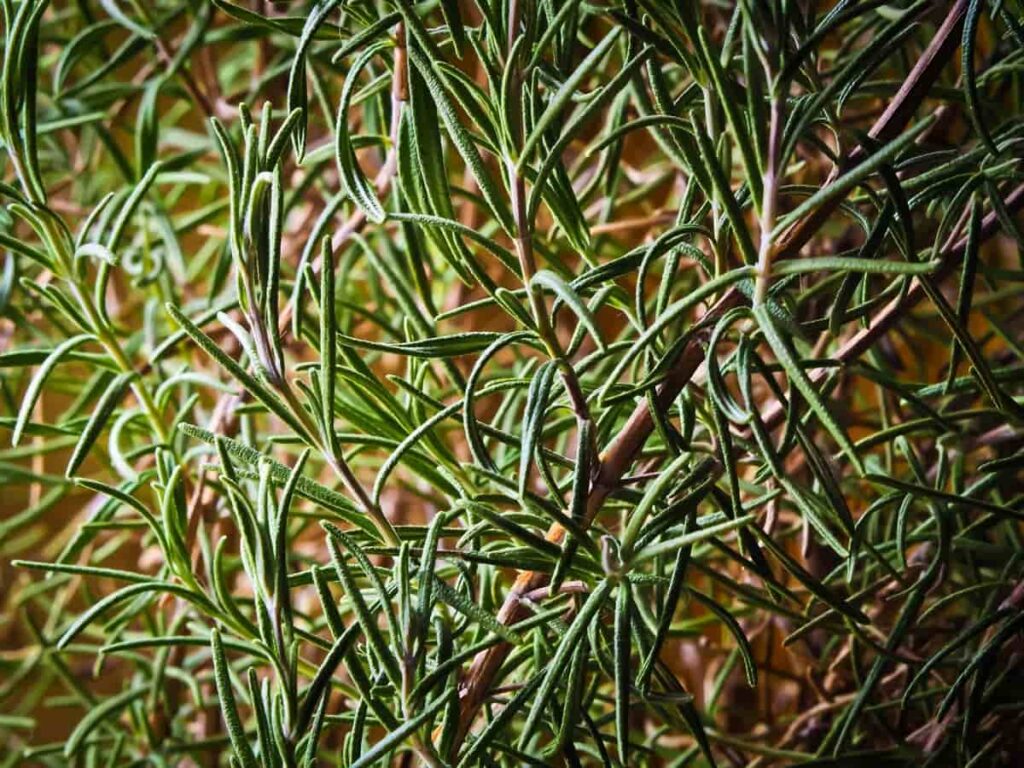
When and how to harvest Rosemary?
Rosemary can be harvested anytime during the growing season by snipping off individual stems as needed. Cut stems from the plant just below a leaf node to harvest Rosemary. Strip the leaves from the stem and dry them for future use. Harvest leaves as needed for fresh use or dried arrangements.
Commonly asked questions about growing Rosemary
Where does Rosemary grow best?
Plant Rosemary in full sun for the best results. The planting site has well-draining soil; the plant won’t tolerate being consistently wet.
Will Rosemary come back every year?
Rosemary will come back yearly if you live in zones 6-10. If you are somewhere colder than that, you can overwinter it indoors and keep it growing for many years.
How long does Rosemary take to grow fully?
If you are growing Rosemary from seeds, it can take 6 to 12 months for a plant to fully mature. This is why growing during the spring season is highly recommended; as it is a perennial plant, you can expect your garden to flourish after the 12-month mark.
Is Rosemary hard to grow?
Rosemary is not as easy to grow from seed as other herbs, but novice gardeners can grow it if they take a few precautions. It is a woody perennial that grows slowly and is not ready to harvest during the first year of plant growth.
Does Rosemary like a lot of water?
It is a drought-tolerant plant that requires drying between waterings to prevent root rot. Water the Rosemary plant by soaking it well so that the water drains from the bottom of the pot, then allow the growing soil to dry out before watering again.
Is Rosemary better in pots or on the ground?
Rosemary grows well in pots. The surface should be dry between waterings, but the soil should never be completely dry.
In case you missed it: How to Grow Spinach in USA: Soil, Propagation, Planting, Care, and Farming Tips
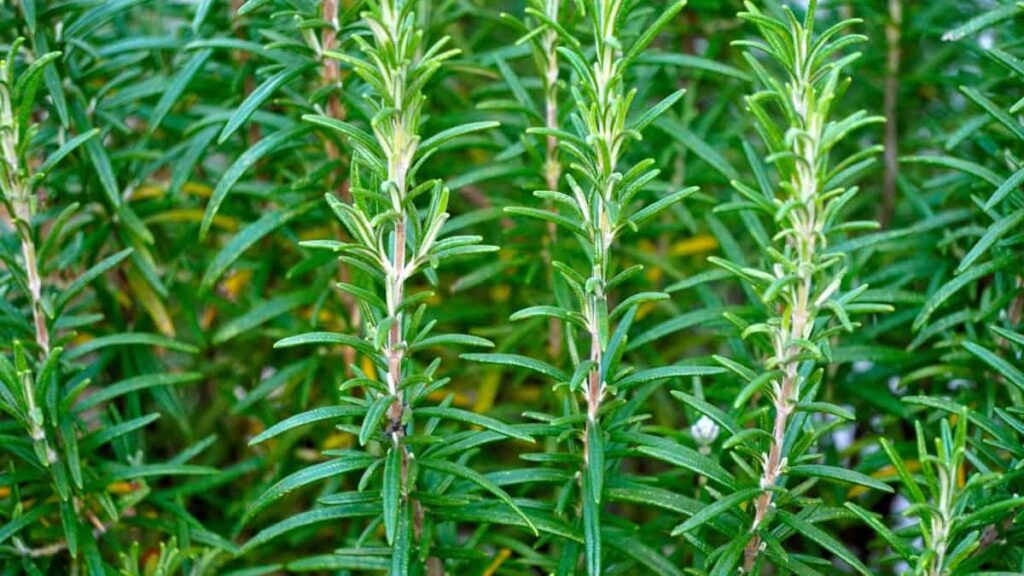
Does Rosemary grow well in pots?
Rosemary does well in soil-based, peat-free compost pots. Water Rosemary plants well during dry spells and feed the plants with a general fertilizer during the growing season.
Why is my Rosemary dying?
The main causes of Rosemary dieback include overwatering, lack of sunlight, pests, diseases, and high humidity. Other main reasons that can cause Rosemary to die are extremely cold winters and excessive rainfall.
Conclusion
Rosemary has a long history of use in cooking and medicine. The plant grows to two to four feet and has small, blue flowers. The leaves are used fresh or dried in cooking. Rosemary is a perennial plant that will come back year after year. With proper care, Rosemary plants can last for many years.
- Economical Aquaculture: A Guide to Low-Budget Fish Farming
- 15 Common Planting Errors That Can Doom Your Fruit Trees
- How to Make Houseplants Bushy: Effective Tips and Ideas
- Innovative Strategies for Boosting Coconut Pollination and Yield
- Pollination Strategies for Maximum Pumpkin Yield
- The Complete Guide to Chicken Fattening: Strategies for Maximum Growth
- Natural Solutions for Tulip Problems: 100% Effective Remedies for Leaf and Bulb-Related Issues
- Revolutionizing Citrus Preservation: Towards a Healthier, Greener Future
- Natural Solutions for Peony Leaf and Flower Problems: 100% Effective Remedies
- Maximizing Profits with Avocado Contract Farming in India: A Comprehensive Guide
- Natural Solutions for Hydrangea Problems: 100% Effective Remedies for Leaf and Flowers
- The Ultimate Guide to Choosing the Perfect Foliage Friend: Bringing Life Indoors
- From Sunlight to Sustainability: 15 Ways to Use Solar Technology in Agriculture
- The Ultimate Guide to Dong Tao Chicken: Exploring from History to Raising
- The Eco-Friendly Makeover: How to Convert Your Unused Swimming Pool into a Fish Pond
- Mastering the Art of Delaware Chicken Farming: Essentials for Healthy Backyard Flocks
- 20 Best Homemade Fertilizers for Money Plant: DIY Recipes and Application Methods
- How to Craft a Comprehensive Free-Range Chicken Farming Business Plan
- Brighten Your Flock: Raising Easter Egger Chickens for Beauty and Bounty
- How to Optimize Your Poultry Egg Farm Business Plan with These Strategies
- Subsidy for Spirulina Cultivation: How Indian Government Schemes Encouraging Spirulina Farmers
- Ultimate Guide to Raising Dominique Chickens: Breeding, Feeding, Egg-Production, and Care
- Mastering the Art of Raising Jersey Giant Chickens: Care, Feeding, and More
- Ultimate Guide to Raising Legbar Chickens: Breeding, Farming Practices, Diet, Egg-Production
- How to Raise Welsummer Chickens: A Comprehensive Guide for Beginners
- How to Protect Indoor Plants in Winter: A Comprehensive Guide
- Ultimate Guide to Grow Bag Gardening: Tips, Tricks, and Planting Ideas for Urban Gardeners
- Guide to Lotus Cultivation: How to Propagate, Plant, Grow, Care, Cost, and Profit
- Agriculture Drone Subsidy Scheme: Government Kisan Subsidy, License, and How to Apply Online
- Ultimate Guide to Raising Araucana Chickens: Breed Profile, Farming Economics, Diet, and Care
- Bringing Hydroponics to Classroom: Importance, Benefits of Learning for School Students
- Ultimate Guide to Raising Polish Chickens: Breed Profile, Farming Economics, Diet, and Care
- Ultimate Guide to Raising Australorp Chickens: Profile, Farming Economics, Egg Production, Diet, and Care
- Silkie Chicken Farming: Raising Practices, Varieties, Egg Production, Diet, and Care
- Sussex Chicken Farming: Raising Practices, Varieties, Egg Production, Diet and Care
- Homemade Feed Formulations for Livestock: Discover Cost-effective Starter to Finisher Feed Recipes